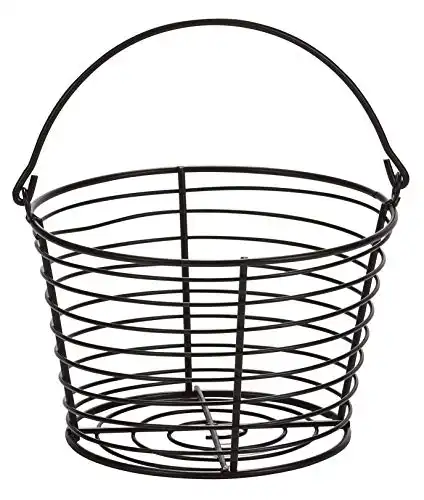If you’ve noticed your flock suddenly has a broody hen that’s ready to sit on eggs and hatch them, then you might need to figure out a way to move her for a variety of reasons. When a broody hen starts sitting on her clutch or a batch of eggs, she’ll stop laying eggs, and she’ll start taking care of the eggs underneath her.
Can you move a chicken sitting on eggs?
You can move a chicken that is sitting on eggs, but it can be a touchy and challenging process. When a hen is broody, she wants to stay sitting on her clutch of eggs until they hatch. A broody hen is driven by pure instinct to the point where she may even sit on golf balls or anything that looks like an egg.
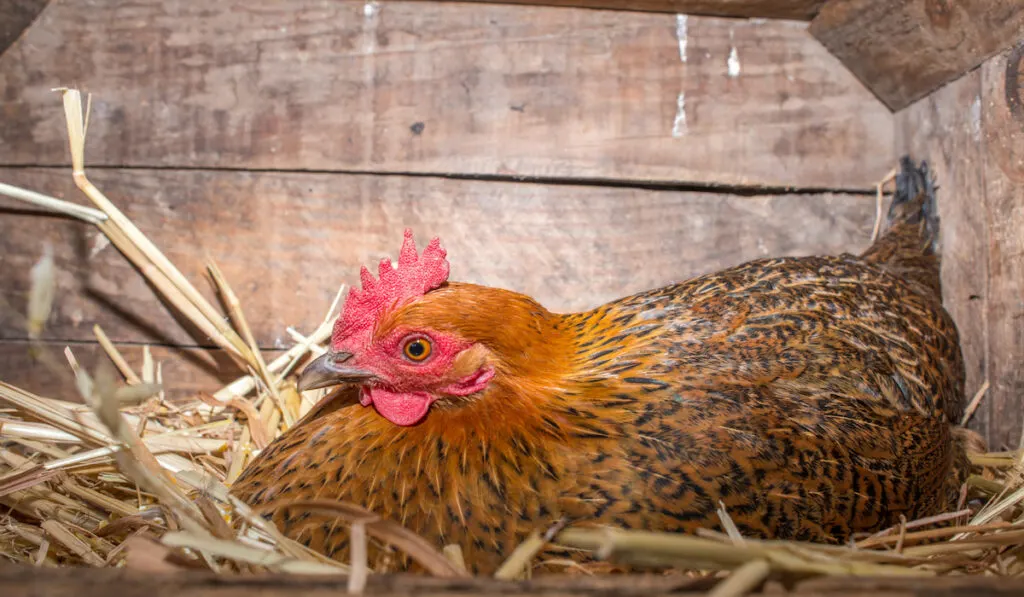
While you can move your broody hen, she won’t want to move, so you’ll need to be careful and take a few precautions to make a move successful.
Since there isn’t a lot of information available on the Internet today about moving a broody hen once she is sitting on her clutch of eggs, we created this article to help you out. Below we’ll discuss some broody hen issues, what you need to know before moving your hens, how you can move your hens, and how you can move hens so they adopt other chicks.
Table of Contents
Broody Hen Behavior
If you are planning on moving your broody hen anytime soon, keep in mind that your hen will be determined to stay where she currently is. Because your broody hen is driven by instinct to sit on her clutch of eggs until they hatch, she’ll only take a break from the clutch to eat, get some water, go to the bathroom, etc. Once she is done, she’ll go right back to her clutch.
The full incubation process for chicken eggs takes about twenty-one days to complete. So, your broody hen will be prepared to sit on her clutch of eggs for three to four weeks before the clutch hatches. That’s why if you are planning on moving your broody hen while she is already involved with a clutch, you’ll need to take your time and plan things out correctly.
Your broody hen will try to do everything in her power to not be removed.
Since your broody hen doesn’t want to be moved, you’ll need a good reason to relocate her. If you know she is in a bad spot, and it would be safer for her to be elsewhere, you’ve probably got a good enough reason to move her. Below we’ll cover some broody hen issues you’ll want to consider both before and after you’ve relocated your broody hen.
Broody Hen Issues
There are several things you’ll want to consider before you move your broody hen. Also, if you’re going to move your broody hen, you’ll need a pretty good reason for doing so since she most likely won’t want to cooperate. The following are a few broody hen issues you’ll want to consider before and after you move your broody hen.
Minimize Stress
Make sure the area you relocate your broody hen to is a stress-free or a low-stress environment. Broody hens enjoy being in peaceful, quiet spaces. They don’t want to be around or near other hens. Once a hen becomes broody, all she wants to do is be alone and take care of her eggs.
Count The Eggs
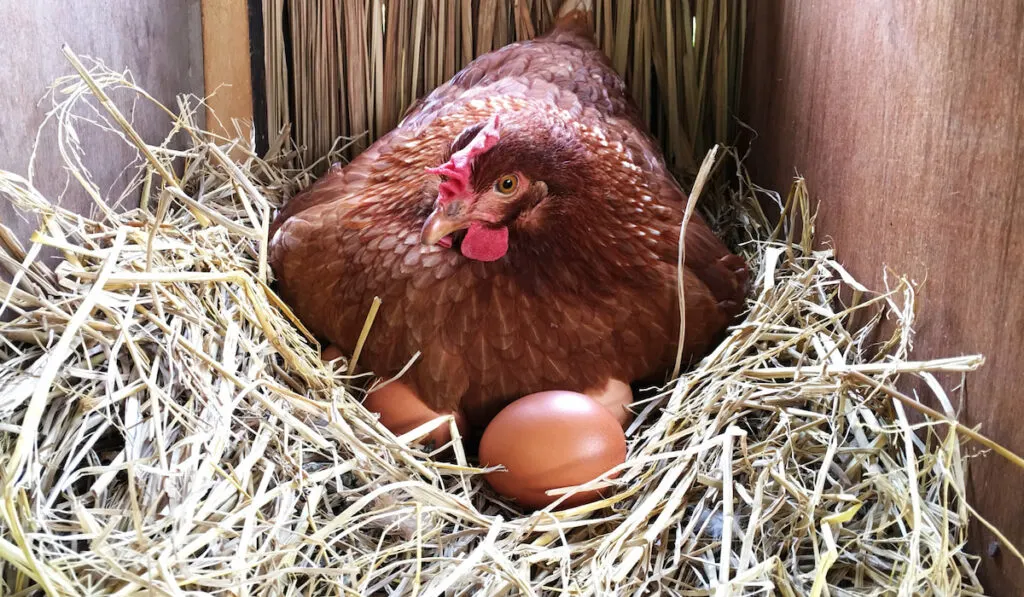
You also want to check on the number of eggs. Sometimes, a broody hen takes over an area that’s got too many eggs in it. Depending on how large your hen is, she can only sit on a certain amount of eggs. This will depend largely on the breed of your hen.
When hens lay eggs in a clutch, the eggs stay hidden, meaning other hens don’t see them. That results in new eggs being laid, and previously incubated eggs being taken out of the clutch.
Shared Nesting Box
You may also have the problem of two or three hens trying to access the same laying box. That’s because some of your hens probably have a preferred box. If a hen finds another hen in her favorite spot, she might make a lot of noise until she gets her box back.
Bullies
Also, keep an eye out for any bullying hens. Chickens can fight ferociously with each other. When a hen is busy keeping a clutch warm, she might get pecked by other hens. That’s because another hen might want that particular laying spot. If a hen gets pecked often, she might wind up with sores and infections, so keep an eye on this behavior.
Safety
Make sure your broody hen has her eggs and nest in a safe area. Sometimes your hen might leave the chicken yard if she is trying to find a quiet, safe place. A broody hen on occasion feels like her clutch will be better off away from the other chickens so she can be left alone. However, she might wind up moving to a location that’s very unsafe for her and the eggs. (source)
Things to Consider Before Moving a Broody Hen
If you’re thinking about moving a broody hen, you’ve got a pretty good reason to if she is encountering any of the issues we listed above. For example, if you notice that your broody hen is being bothered by other chickens or is getting bullied, you may need to relocate her.
You’ll need to have a good reason to move your broody hen. That’s because after you move your hen, the hen will most likely abandon the clutch.
However, if you can take the proper steps and precautions, there will still be a chance that your broody hen will keep her clutch safe. While it won’t always be the case, you’ll have some hens that relocate fine, and others that abandon their clutch without much notice. It’s difficult to predict how a hen will act, so you’ll need to be prepared for both possibilities.
If you move a broody hen and she abandons her clutch, she is letting you know she doesn’t want to sit on her eggs any longer. That means she is losing the “broody” instinct. So, if she abandons the clutch, return her to her flock.
Before you move your broody hen, you’ll also need to consider where you want to move your broody hen to, if it will be safe for her, and the noise level of the new location.
I suggest making sure that you’ve got some straw and a new nest ready to go for your broody hen and her clutch before you move her. If you start preparing, you’ll increase the likelihood that the broody hen will return to her clutch.
Moving Your Broody Hens
Now that you know how to prepare to move your broody hen, we’ll talk about how you can actually move them. We’ll cover first what you’ll need to move your hens successfully, my own story about when I moved my broody hens, and some steps covering how you can move your broody hens.
What You’ll Need
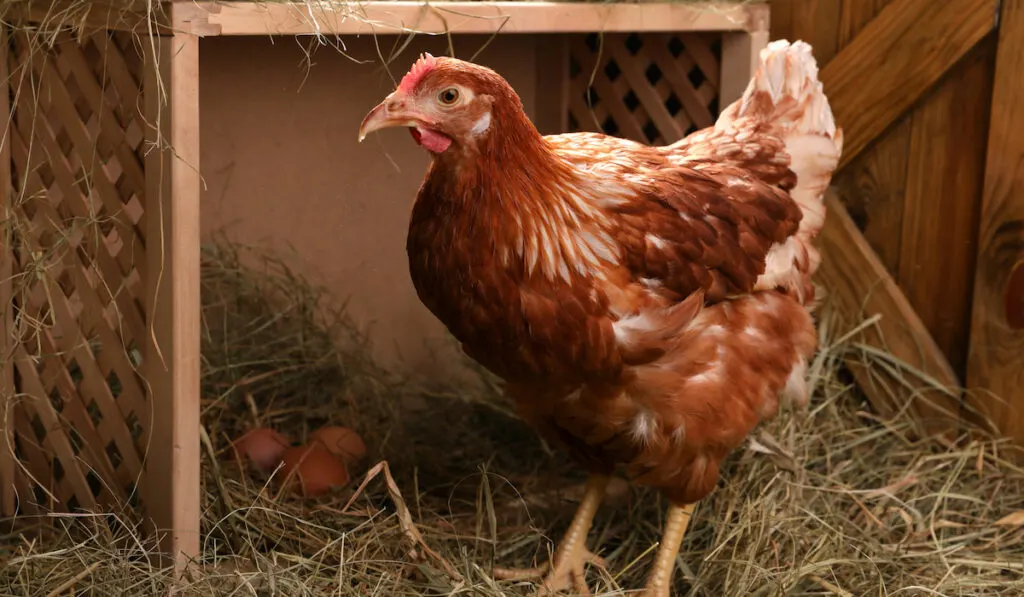
When preparing to move your broody hens, you’ll need a few items.
- A nice pair of . Remember, broody hens are protective of their eggs, and the hen is going to fight when you try to move your hen. You’ll most likely get pecked and scratched. To prevent your broody hen from drawing your blood, wear some durable leather gloves.leather gloves$18.99View on AmazonWe earn a commission if you make a purchase, at no additional cost to you.04/18/2024 02:48 pm GMT
- A so that you can safely and successfully gather the eggs.
- A towel to cover your broody hen with so that she can’t witness the move. (source)
My Story
Over the past few months, two of my Buff Orpington hens went broody. The first hen had her clutch in a trendy laying spot. My second hen went to a faraway corner of the chicken house where I’d never seen any of my hens lay their eggs before. Both of these broody hens were not in great areas to keep their eggs.
I had to move my first hen from her popular spot since it would not only be high-traffic with the other chickens, but I worried about her getting pecked, bullied, and having no quiet.
So, I picked her up, placed her under my arm, grabbed her eggs, and headed to their new spot. I put the eggs in the new laying box with straw. Then, I put the hen where she could see the eggs and set her free. This hen got very upset, started squawking, and kept walking around the chicken house.
When I checked on my first hen the next day, she still wasn’t on her clutch. She was sitting on a perch instead of sitting on her eggs. It became apparent to me that she had abandoned her clutch.
The eggs had already been cold for too long at that point. I wound up having to discard them and returned the hen to her flock.
My second hen, who had decided to put her eggs far away from the other chickens in the corner of the hen house, also needed to be moved. She didn’t have her eggs in a proper nest, so I made her a little nest in a new, safe spot and moved her eggs. I moved her to where she could see her eggs and placed her in the laying box with them.
After that, she squawked for a bit, but within ten minutes, she was quietly sitting on her eggs. When I checked on her the next day, she was still sitting there, settled in happily.
I don’t know what makes some hens more tolerant of being moved. It is kind of a shot in the dark so just keep in mind there is always a chance your hen will abandon her eggs if you move her.
Your Results
Depending on your hens and how you decide to move them, you might wind up with results that are different from mine. However, always be ready for both potential outcomes with your broody hens.
You will either wind up with a hen that will still take her clutch or one that will abandon them. Prepare for both situations, and adapt accordingly.
Broody Breeds
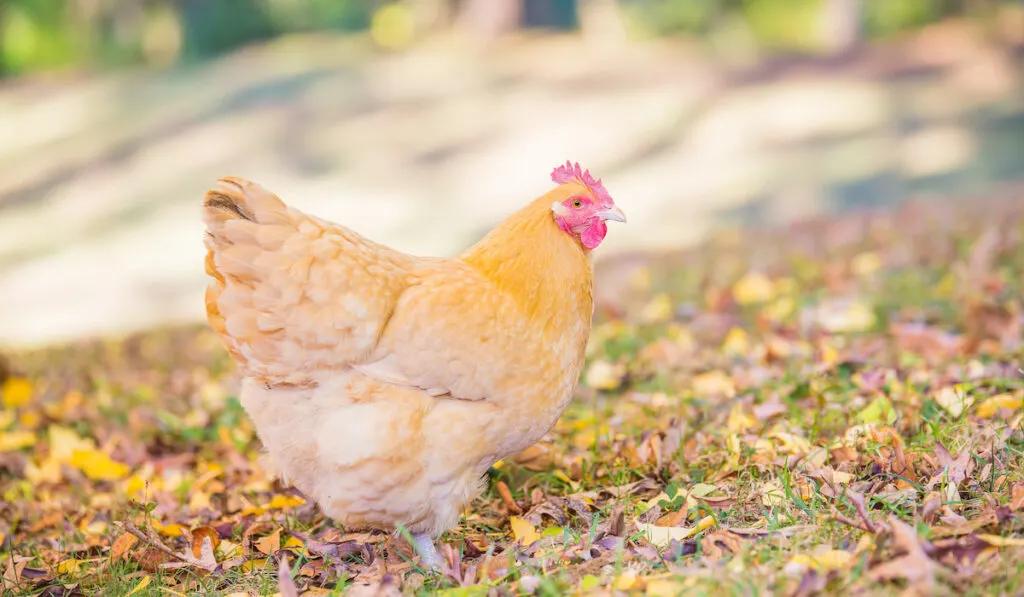
So, what types of chickens tend to go broody, so you’ll know what to look for, and who you might have to move? Depending on the breed of chickens you own, some chicken breeds go “broody” more often than other kinds.
If you want to hatch chicks and get eggs, you should opt for chicken breeds that go broody often. However, if you don’t want to have hens laying eggs, then you should purchase a kind that doesn’t go broody easily.
The breeds of chickens listed below go broody often:
- Buff Orpington
- Australorp
- Silkies
- Dominicker
So, if you are looking to gather up eggs or have your hens hatch some chicks, opt for the chicken breeds we’ve listed above.
On the other hand, if you don’t want your chickens to go broody, you should pick chicken breeds that don’t go broody often. The below list of chicken breeds rarely goes broody:
- Barred Rock
- Rhode Island Red
- Wyandotte
- Leghorn (can sometimes go broody)
- New Hampshire Red
We’ve only included a small number of chicken breeds on our lists above. We don’t have enough time or space here to cover all the kinds of chickens. So, the above lists include the most popular broody and non-broody chicken breeds.
How Do I Move a Broody Hen without Disrupting her Brooding?
When you are planning to move your broody hen, you’ve probably got a good reason to do so.
Unfortunately, when some hens go broody, they wind up in locations that aren’t great for hatching or raising chicks. That’s because hens have instincts about their nests that don’t always ideally transfer to the farm environment.
If you need to move your hen, it’s probably because she’s made a nest that is:
- Up too high from the ground where the chicks can fall and hurt themselves.
- In a nesting box where other hens might steal her brood, which is very common if you have several hens.
If you have an area where several hens are trying to overtake a nesting box, you can transfer your hen to a nest in an overturned bucket. Make sure you put plenty of straw in the bucket. Also, you can transfer the nest and bucket quickly to other areas and locations if needed without moving the hen again.
We’ll cover the steps you’ll need to address so that you can move your broody hen successfully.
#1 Prepare
Before you move your broody hen, you’ll need to get yourself prepared. It’s a good idea to prepare for your broody hen move during the day. After you’ve made your preparations, you can move your broody hen to her new nest late at night.
It’s essential to make sure you’ve got everything around the hen’s new nest ready to go so that you can leave her alone immediately after you’ve moved her.
If you wait to prepare her nest and you wind up turning on lights or moving food and water around right after you’ve moved her, she might get stressed out and abandon her clutch. Then, she won’t be brooding any longer.
To make sure your hen will be as comfortable as possible, try to move your hen while she is asleep so that she hopefully won’t notice the differences, and then leave her.
That’s why you’ll want to have the entire set-up process done before you move your hen. You don’t want to be knocking things around that might wake her up. That might cause her to wake up, get stressed, and abandon her clutch.
#2 Get Your Gear
Remember, you’ll need some leather gloves,
Cutting off her light supply also makes it less likely that she’ll peck at your hands. Since it will be dark under the towel, your broody hen should stay calm.
#3 Support Your Hen
Make sure you also support your broody hen’s body while you move her. You need to stabilize her legs and softly hold her wings down while you keep her under the towel. While she is in that position, you should slowly transfer her.
#4 Avoid Using Light
Since you should be moving your broody hen at night, you want to try to keep things as dark as possible so that you don’t wake her up during the move. That means you need to avoid turning on the lights. Instead of using your usual overhead lights, consider a
#5 Confine
Until your hen realizes her new nest is her current nest, you’ll want to make sure you help her settle into her new area. One way you can confine her into her new nest is to put a bottomless dog crate over her new nest, or use an overturned laundry hamper. You need something with large holes in it and a weight on top of it so she can’t escape.
You should confine your broody hen to her nest with no food and water for 24 hours. After that, you can remove the confinement, and she will probably have adopted the nest as her own. (source)
Final Thoughts
Now that you’ve learned how to move a broody hen, you’ve got a formula to help you successfully move your chicken even while she is sitting on eggs. By approaching the move with preparation, you should be able to keep your hen and her clutch safe and away from harm.


